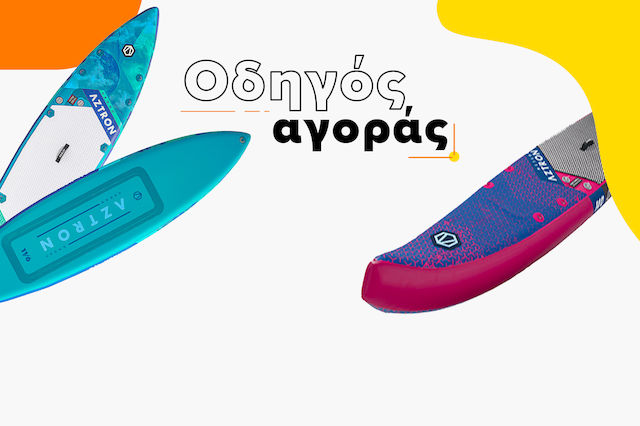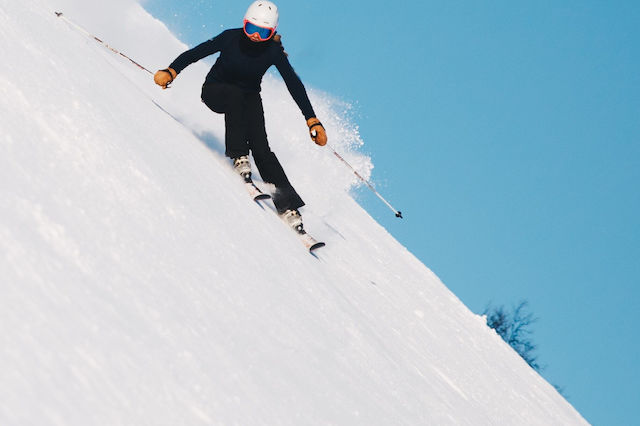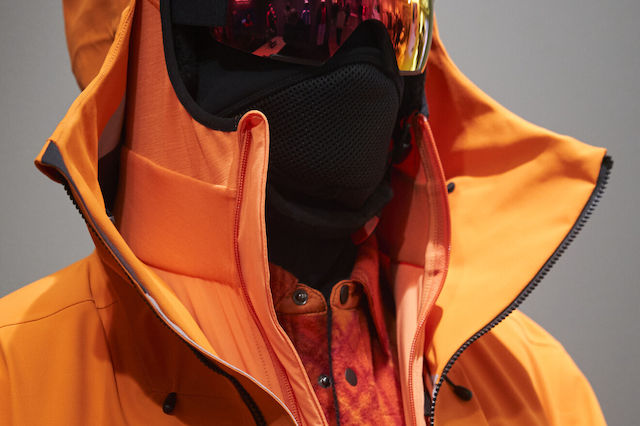Choosing the right snowboard for your snow adventures
How to choose the right one for you, based on your needs!
With influences from surfing, skateboarding, and skiing, snowboarding is now one of the most popular winter sports. Whether you are a professional or just discovering the magical world of snowboarding, this buying guide will help you choose the snowboard that suits your needs.
Before we begin, we will explain some terms related to the board's profile so that they are clear to you when mentioned in the guide.

Snowboard Profile
When we talk about the profile of a snowboard, we essentially refer to how it spreads on the snow, observing it from the side. Thus, we have the following types of profiles:
- Camber: A snowboard has a camber profile when the nose and tail are pressed down, providing more contact with the snow and excellent grip. This is the most classic snowboard profile.
- Rocker: When the snowboard curves upwards on the front and/or back edge, we say that its profile is rocker. This type is suitable for use in powder, relatively easy turns, and parks.
- Flat: You may also encounter it as Zero Camber. In this case, the snowboard has 100% contact with the snow, resulting in greater stability than a classic rocker. Usually, you find this profile in freestyle snowboards.
- Hybrid Camber (Rocker/Camber/Rocker): It is the snowboard that is curved under your body and bindings. It is considered excellent for freestyle snowboarding.
- Hybrid Rocker (Rocker/Camber/Rocker/Camber/Rocker): In this case, the snowboard is curved towards the nose and tail. The rocker allows the snowboard to rotate easily and float on soft snow, while the camber ensures grip. This profile performs well in all conditions and terrains.

Now that you know everything about the profile of the board, it's time to answer the following questions to get one step closer to the right purchase for you.
Where do I want to go snowboarding?
The first question concerns the terrain where you want to go snowboarding. Is it in a park? In untouched snow? On a slope? Or do you need a snowboard that fits everywhere?
Based on their use, there are five more well-known types of boards: All Mountain, Freestyle, Freeride, Powder, and Park.
All Mountain
All-Mountain snowboards are the ideal solution for you if you want to go everywhere with your board, whether it's in a park or in a place with untouched snow. They usually have a symmetrical shape, while their hardness can vary, with some being softer for flexibility in powder and others being harder for better performance on the slope.
When buying an all-mountain board, it is important to consider your skills and preferences, as well as the type of snow you will encounter.
It is considered a suitable choice for beginner snowboarders.
Freestyle
Freestyle snowboards are considered soft in hardness. They usually have a symmetrical shape, which means that the nose and tail are the same. This allows snowboarders to ride with their opposite foot as easily as with their regular foot. Freestyle snowboards are available in various sizes, with the choice depending on the rider's height, weight, and preferences. They are generally more maneuverable compared to other types of boards.
They are suitable for beginner users, as they help in performing tricks on slopes and parks.
Freeride
Freeride snowboards are the tallest in height and have a medium to hard flex to meet the demands of snow beyond the slopes. The rider's position here is slightly back from their center, so that the front part does not sink into the snow.
Freeride snowboards are not considered suitable for beginners, as they are designed for adventurous riders who spend most of their time off-piste.
Powder
Powder snowboards are designed to easily "float" in deep snow. They usually have a tapered shape with a wider nose and a narrower tail, while the snowboarder stands slightly back from their center. They have a soft to medium flex, which helps them balance the pressure and move more easily in deep powder snow.
Powder snowboards offer an epic experience for the snowboarder, allowing them to enjoy the magic of snow and explore off-piste areas.
Therefore, they are not suitable for beginners, but for professionals of the genre.
Park
The park snowboard boards are designed for use in parks and halfpipes. Halfpipes are facilities in the world of skiing, where riders perform tricks and jumps. They usually have a twin-tip shape, which means that the nose and tail are symmetrical. This allows snowboarders to perform tricks and jumps equally easily with their opposite foot in front (switch), as well as with their regular foot. They have a soft to medium flex, for easier turns.
It is important to have some experience before trying these types of boards, as tricks and jumps require technique and skill. Therefore, if you are taking your first steps in snowboarding now, this type is not suitable for you.

What is my level?
The objective selection of a snowboard according to your level will make your learning process much easier. Whether you are a beginner, intermediate, advanced, or expert, it is determined by how comfortable you feel on the board and how many hours you have practiced on the snow.
- Beginner
If you are a beginner snowboarder, you should ski within the slopes at a low speed on routes that are marked with green or blue difficulty level. Therefore, low and less rigid boards are the most suitable for you. Choose an All-Mountain snowboard, which will help you with easy descents.
- Intermediate
If you belong to the intermediate snowboarders and can comfortably ski on routes that are marked with blue or even red difficulty level, but you want to improve further, a freestyle board is the right choice for you. With this type of board, you will be able to successfully perform your first tricks and maneuvers on the snow.
If, however, you do not feel so comfortable with it, you can of course choose an All-Mountain snowboard.
- Advanced
Now, you can go all over the mountain comfortably and with style. If you are now among the advanced snowboarders, there is no general rule, you can choose the snowboard that best suits your riding style.
- Expert
The difference between an advanced and an expert snowboarder can be relative and depends on many factors.
An expert snowboarder usually has a high level of technical ability. This means that they are comfortable at various speeds and types of snow, such as powder, park, or off-piste environments. They know how to take advantage of the terrain and how to exploit the possibilities of the ski resort to upgrade their skills. Generally, the transition from advanced to expert level requires experience, practice, and continuous development of your abilities.
At this level, just like in the advanced level, you can choose the snowboard that is closest to your riding style.
What height, shape, and width of snowboard suits me?
The right height, shape, and width of a snowboard require a little more analysis, as each of these can offer you a different experience on the snow.
Previously, it was believed that to find the ideal height of a snowboard, you simply had to compare the top of it with your chin. If the height matched, then it was ideal for you. However, today things have changed significantly.
As an indication, in the tables below you can see the recommended height of a snowboard, generally based on your height and weight.
Appropriate board height based on rider's height
At this point, it should be mentioned that regarding the weight of the rider, most manufacturers provide a range of kilograms for which each board is considered ideal. However, the following generally apply:
Appropriate board height based on rider's weight
Before you decide, remember that other factors, such as skill level, board construction, and your riding style, also contribute equally to determining the appropriate height of a snowboard.
For example, if you love freeriding, a larger board for more stability and speed would be a good choice. On the other hand, if you're looking for a freestyle snowboard, choose a smaller size so that you can maneuver more easily in the park.
Surfboard Shapes
Your performance depends significantly on the shape of the surfboard. Depending on your style, there are boards that are considered more suitable compared to others. Let's see the most well-known ones below.
True twin
The shape of the board when we talk about true twin is completely symmetrical, as shown in the following image. This means that the nose and tail have the same shape and size, while the bindings are placed in the center of the board. The idea behind the true twin design is to offer the same experience whether you ride with your right foot forward (regular) or with the opposite (switch).
In general, these boards are preferred by freestyle riders, as they provide ease when riding with the opposite foot forward and improve the flexibility of the board. Thus, they are ideal for use in parks and for freestyle snowboarding.

Directional
In this board shape, the rider's position is slightly back from the center. The nose is longer, while the waist is softer compared to the tail, for greater stability at high speeds.
Riders who spend more time on the slopes and seek stability and good performance at high speeds often choose directional boards. Generally, it is considered ideal for those who prefer All-Mountain or Freeride snowboarding.

Directional twin
This is a combination of characteristics of a twin tip and a directional board. Boards of this type are symmetrical, but not in all sides, while the rider's position is slightly behind their center.
This means that you can use them comfortably in all directions, maintaining flexibility for tricks and freestyle use. At the same time, they provide some of the benefits of directional design, making them suitable for good performance in various conditions, especially in off-piste snow.
They are considered ideal for you who prefer the All-Mountain riding style, as well as for you who want to do tricks in the snow.

Board Width
The width of the board is the distance between the side parts at the waist point, and it affects the performance of the board in various snow conditions and how it reacts in turns.
- Regular: Boards with regular width serve a wide range of riders and conditions. They can provide good stability and performance in various snow environments.
- Wide: Wide boards are designed for riders with shoe sizes 44 and above, minimizing the risk of "toe drag," which means the front part (toes) of the shoes touching the board during turns. They are stable at high speeds and in various conditions.

Flex of the board
Last, but not least... The flex, which is numerically measured from 1 to 10, determines how soft or stiff the boards are. For example, boards with a flex of 1 to 4 are suitable for beginners as they have elasticity. On the other hand, boards with a flex of 5 to 10 are the right choice for advanced and experienced snowboarders. Flex essentially refers to the ability of the board to bend and twist when you shift your weight.
- Flex 1-4: Soft
A soft board provides more flexibility, making it ideal for freestyle use, spins, and tricks on the snow as it responds better to the rider's movements.
It is considered suitable for beginners and freestyle snowboarders.
- Flex 5-7: Medium
Most riders prefer boards with medium flex as they are the most flexible. Boards with medium flex are usually good for a wide range of users as they offer a balance between control, stability, and adaptability to different snow conditions and riding styles, while being more forgiving in case of falls.
They are ideal for riding all over the mountain, but you will appreciate the additional support they provide in the park.
- Flex 7-10: Stiff
Stiff boards have less flexibility, offer the highest response and support, and are aimed at advanced and expert riders who prefer high speeds and stability. If you have complete control, they are excellent for freeriding and fast riding on the slopes.
Women's and children's snowboards
Today, there is a plethora of snowboards specifically designed for women, available from almost every major brand. Generally, although the same guidelines for board size apply, the women's snowboard is slightly different from that of men. Specifically, it usually has a flexible construction (soft to medium flex). This facilitates control, making it more user-friendly. Additionally, it has a narrower width to better fit smaller foot sizes, while featuring a feminine and stylish design.
Regarding our young snowboarders, as they cannot easily turn and maneuver on the snow with adult boards, as they are stiffer, there are specially designed children's snowboards with smaller height and width to better fit them. Additionally, many of them have special support systems that help children learn more easily and develop their skills on the snow.

Summarizing...
In the following tables, you can see a summary of the recommended types, shapes, profiles, and flex of the board based on your level and riding style. Of course, your final choice may vary depending on your preferences in the terrain, what you want to achieve with your board, and generally the level to which you want to evolve in this sport.
Recommended Type and Flex of Board Based on Your Skill Level
Recommended board shape and profile based on your riding style
The choice of the right snowboard is crucial for your experience on the snow. As you embark on your journey into the world of this beautiful sport, remember that each board is unique, just like each of your skiing experiences.
We recommend taking into account your personal preferences, skill level, and riding style when making a purchase. You should remember that the right snowboard is not just a tool for downhill, but a "companion" that will accompany you on every skiing adventure.
Discover the joy of snowboarding and immerse yourself in the magic of the snowy landscape.
Tips for snowboard equipment
Choosing the right snowboard equipment is essential for enjoying your experience on the snow. Whether you are a beginner or an experienced snowboarder, the right combination of board, bindings, boots, and other accessories can determine your comfort, safety, and performance on the mountain. So, below we suggest some additional items that have proven useful to many snowboarders.
- Boots: Choose snowboard boots that are comfortable and provide good support. Proper fit is crucial for control and comfort.
- Bindings: Make sure your snowboard bindings are compatible with your board and boots.
- Gloves and clothing: Choose waterproof gloves and clothing that will keep you warm. Water resistance is equally important.
- Protective gear: Wear a protective helmet and mask. Your safety should always be a priority.












Be the first to leave a comment!